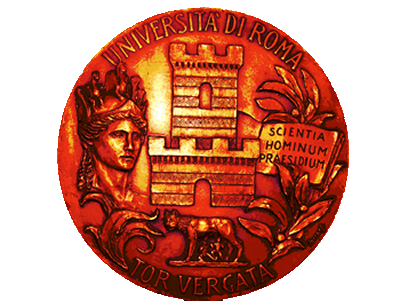Digital Electronics - 9 ECTS
Marco Re
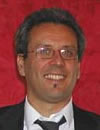
|
Specification of Combinational Systems.
Combinational ICs: Characteristics and Capabilities.
Description and Analysis of Gate Networks.
Design of Gate Networks.
Specification of Sequential Systems.
Sequential Networks.
Standard Combinational Modules.
Arithmetic Combinational Modules and Networks.
Standard Sequential Modules.
Programmable Modules.
Algorithms and Algorithmic Systems.
Implementation of Algorithmic Systems.
Specification and Implementation of a Microcomputer.
Boolean Algebras.
Specification Language for Digital Systems. |
Reference book: Introduction to Digital Systems
M. Ergegovac, T. Lang, J. Moreno,
Wiley
more info and course material
Kinematics and Dynamics of Mechanisms - 9 ECTS
Ettore Pennestrì (3 ECTS) and Giorgio Figliolini (6 ECTS) (2017)
Marco Ceccarelli (2019-20)
|
KINEMATICS
Rigid body motion and Rivals theorems. Relative motion and Coriolis theorem. Instant center of rotation and Chasles theorem. Velocity vector field. Fixed and moving centrodes. Application: Cardan mechanism. Curvature analysis and Euler-Savary equation. Inflection circle and return circle. Aronhold theorems. Acceleration pole and Bresse circle. Acceleration vector field.
Lower and higher kinematic pairs. Kinematic chains and derived mechanisms. Grübler’s formula. Kinematic inversion. Four-bar linkages and Grashof law. Slider-crank/rocker mechanisms. Double sliders mechanisms. Aronhold-Kennedy theorem. Collineation axis and Bobillier theorem. Roberts-Chebyshev theorem and cognate mechanisms. Loop closure equation method: four-bar and slider-crank analysis. Kinematic analysis of planar mechanisms. Introduction to the kinematic synthesis of planar mechanisms (graphical methods): rigid body guidance (two and three positions), straight path generators, function generators.
Conjugate profiles and Euler-Savary equation. Auxiliary centrode and Camus theorem. Kinematic synthesis of cycloidal and involute gears. Involute cylindrical gears with straight teeth: transmission ratio, interference, minimum number of teeth, continuity of motion, contact ratio, sliding velocity. Pinion-rack. Involute bevel gears with straight teeth: transmission ratio, virtual gears and Tredgold approximation. Octoidal bevel gears and crown-rack. Gears and bearings reaction forces. Kinematic analysis of epicyclic gear trains based on graph theory. Cardan joint.
MECHANICAL VIBRATIONS
Free and forced response of one degree-of-freedom mass spring-damper model. Amplification factor. Vibration of 1 d.o.f. system with moving base. Coefficients of transmissibility of forces and displacements. Logarithmic decrement. Average dissipated power. Two degrees-of-freedom systems: Equations of motion. Dynamic dampers. Fourier series. Free response of n degrees of freedom undamped system. Natural frequencies and vibration modes. Orthogonality of vibration modes. Decoupling of equations. Critical speed of shafts. Frequency equation. Dunkerley equation. Rayleigh method.
DYNAMICS
Equivalent systems of forces. The equations of Statics. Static analysis of a slider-crank. The Principle of Virtual Work and its application to statics.
Resultant of inertia forces. The Lagrange-d'Alembert principle. Application of virtual work principle to the solution of dynamics problems. Energy balance equation. Mechanical efficiency. Static and dynamics analysis of slider-crank and four-bar linkages. Applications of the Principle of Virtual Work. Numerical integrations of equations of motion: methods of Euler, Heun, Runge. |
olini (3+6cr)
BLOCK A
Energy Systems - 6 ECTS
Michele Manno
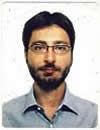
|
Introduction
Overview of energy sources, energy conversion systems, national and world energy needs.
Analysis of energy conversion systems based on 1st and 2nd Law of Thermodynamics. Thermodynamic cycles: external and internal irreversibilities, definition of Rankine-Hirn and Joule-Brayton cycles.
Steam power plants
Analysis of ideal and real thermodynamic cycles. Choice of operating parameters and techniques to improve plant’s efficiency: steam reheating, regenerative feed heating. Plant layouts.
Gas turbine power plants
Analysis of ideal and real thermodynamic cycles. Choice of operating parameters and techniques to improve plant’s efficiency: regenerative heat exchanger, reheaters, intercoolers. Plant layout of heavy-duty and aeroderivative turbines.
Combined cycle power plants
Analysis of “topping” (gas turbine) and “bottoming” sections, efficiency, power ratio between gas and steam turbine, plant layout. Thermodynamic optimization of bottoming sections with variable temperature heat input.
Internal combustion reciprocating engines
Cycle analysis with ideal gas working fluid; fuel-air cycle analysis; real engine cycles; power output, mechanical efficiency, volumetric efficiency and engine operating parameters; correction factors for power and volumetric efficiency; engine operating characteristics.
Hydroelectric power generation
Hydraulic turbines: classification, operating parameters, performance characteristics, cavitation.
Hydroelectric plant layouts. Pumped storage hydroelectricity.
Syllabus |
Reference book:
Fluid Machinery - 6 ECTS
Roberto Verzicco (3 ECTS), Vincenzo Mulone (3 ECTS)
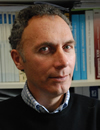
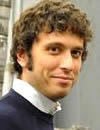
|
Goal of the course: The goal of the course is to give the students the basic knowledge of the principles of operation of machinery components (such as pumps, compressors and turbines), having provided the details of deriving and applying the fluid-dynamics equations (mass, momentum and energy).
COURSE SYLLABUS
Introduction
Classification of machines. Turbines, compressors, volumetric, rotary machines and their applications to industrial practical cases. Analysis of performance: power, work, efficiency.
Basics of fluid dynamics
Material and spatial description of the flow field. Translation, deformation and rotation. Reynolds’ transport theorem.
Differential balances in turbomachinery (mass, momentum, thermal and mechanical energy) in stationary and rotating frames of references. Entropy balance. Phenomenological description of turbulence and intermittency in turbomachinery, and basic description of Reynolds Average Navier Stokes (RANS) equations.
Integral balances in turbomachinery (mass, momentum, moment of momentum, energy) and application to basic components.
Flow at high subsonic and transonic Mach numbers (density and cross-section changes, normal and oblique shock waves, detached shock waves).
Theory of turbomachinery stages
General treatment of turbine and compressor stages, dimensionless parameters, degree of reaction and its effect on stage configuration. Stage load coefficient and effect on power. Unified description of a turbomachinery stage, special cases.
Turbine and compressor cascade flow forces.
Blade forces in inviscid and viscous flow fields. Effect of solidity on blade profile losses, relationship between profile loss coefficient and drag. Optimum solidity, generalized lift-solidity coefficient: turbine stator and rotor.
Efficiency of multi-stage turbomachines.
Polytropic efficiency. Isentropic turbine efficiency, recovery factor. Compressor efficiency, reheat factor. Comparison of polytropic and isentropic efficiency.
Volumetric machines.
Piston pumps and compressors: energy analysis, indicated diagrams, volumetric efficiency, multistage machines. Rotary pumps and compressors.
Application to practical cases
Pumps and compressors: operating maps, external circuit characteristic curves, flow control. Cavitation in pumps. Basic aerodynamic analysis of wind turbines: actuator disc analysis, Betz limit, basics of blade design. Hydraulic turbines: classification, dimensionless analysis. Basics of hydraulic turbine design: head, flow rate, degree of reaction. |
Reference book: M.Shobeiri, Turbomachinery Flow Physics and Dynamic Performance, Springer.
Machine Design - 9 ECTS
Luciano Cantone (2018-2019)
Marco Evangelos Biancolini (by 2018)
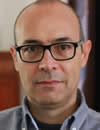 |
The aim of the course is to provide a basic general knowledge about machine design methods completed with design guidelines for specific components.
The reference textbook is "Machine Component Design", 5th Edition International Student Version Robert by C. Juvinall - (University of Michigan), Kurt M. Marshek (University of Texas at Austin).
The first part of the course is addressed to the consolidation of basic knowledge to put the student in the right conditions to face a generic machine design problem: Mechanical Engineering design in Broad, Perspective, Load Analysis, Materials, Static Body Stresses, Elastic strain, Deflection, Stability (Eulerian buckling), Vibrations (beam eigenmodes), Failure Theories, Safety Factors, Reliability, High cycles Fatigue, Low cycles Fatigue, Surface Damage, Contact problems.
The second part will cover specific design activities: Threaded Fasteners and Power Screws, Rivets, Welding, Bonding, Springs, Lubrication and Sliding Bearings, Rolling-Element Bearings, Spur Gears, Shafts and Associated Parts.
During the course several design activities will be demonstrated by exercises and by real life applications. |
Reference book: Machine Component Design, 5th Edition International Student Version Robert C. Juvinall - (University of Michigan), Kurt M. Marshek (University of Texas at Austin)
Syllabus - Prof. Biancolini
Syllabus - Prof. Cantone esercitazioni 04-2019
Manufacturing Technologies - 9 ECTS
Fabrizio Quadrini

|
Manufacturing Technologies
Fundamentals of materials: structure of metals, mechanical behavior, material testing, physical properties, heat treatment.
Manufacturing of metals: fundamental of metal-casting, metal-casting processes and equipment, bulk forming (rolling, forging, extrusion and drawing), sheet-metal forming, sintering, fundamentals of machining, cutting-tools, machining processes (turning, drilling, milling).
Manufacturing of plastics and composites: structure and properties of polymers, properties and applications of composite materials, forming and shaping of plastics, processing composite materials.
Joining processes and advanced machining: fusion-welding, solid-state welding, adhesive-bonding, fastening, laser-beam machining, electron-beam machining, water jet and abrasive water-jet machining, electrical-discharge machining.
|
Reference book:
“Manufacturing Engineering and Technology”, Serope Kalpakjian and Steven R. Schmid, Prentice Hall.
“PHYSICAL METALLURGY PRINCIPLES” R.E.REED Hill, PWS PUBLISHING COMPANY.
Syllabus
BLOCK B
Experimental Electronics - 6 ECTS
Lucio Scucchia
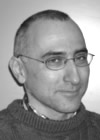 |
General concepts related to the use of measuring instruments, in the laboratory
(multimeter, power supply, signal generator, oscilloscope).
Compensated probes and breadboard.
Synthesis of the BJT bias networks.
BJT current sources.
Synthesis of small-signal amplifiers.
Concepts related to the power amplifiers, class A, B and AB.
Concepts related to sinusoidal oscillators.
Structure and operation of operational amplifiers and their applications.
Structure and operation of voltage regulators and their applications.
Structure and operation of timers and their applications.
Experiences:
RC, RL and RCL circuits.
Diode circuits: rectifiers, limiters, clamper, voltage doublers, capacitive rectifiers.
BJT Bias.
Emitter and collector common configuration
Phase-Splitter.
BJT differential amplifier with emitter coupled.
Power amplifiers in class A, B and AB
Current source.
Inverting and non-inverting amplifier realized with operational amplifiers.
Integrator and differentiator realized with operational amplifiers.
Comparator, comparator with hysteresis, generator of square waveform.
Linear voltage regulator.
Integrated 555 in monostable configuration.
Integrated 555 in astable configuration.
Wien bridge oscillator.
LC oscillator. |
Reference book:
- Neil Storey, “ELECTRONICS: a system approach,” 4th edition, Pub. by Prentice Hall
- J. E. Solomon, “The monolithic op amp: A tutorial study,” IEEE Joyurnal of Solid State Circuit, vol. C-9, N.6, Dec. 1974.
- B. Carter and T. R. Brow, “Handbook of operational amplier applications,” Texas Instruments, Tech. Rep.
- C. Simpson, “Linear and switching voltage regulator fundamental: part 1,” National semiconductor, Tech. Rep., 1995.
Syllabus
more info and course material
Laboratory of Sensors (new name from 2016-17)
Alexandro Catini (since AY 2016-2017)
 |
Introduction to sensors;
Circuits for resistive and capacitive sensors;
Temperature sensors: thermistors, thermoelectric effects;
Magnetic field sensors; Optical sensors;
Photoconductors and Photodiodes; IR sensors;
Mechanical sensors: position, strain gauges, accelerometers, gyroscope, pressure sensors, flow meters, micro electro mechanical systems;
Intro to the Arduino and Raspberry PI Boards
Using the breadboard to build simple circuits, Digital input and output, build sensor interfaces;
Analogue Input and Output, PWM, Sensor calibration
Building more complex circuits, interfacing with MATLAB
|
Reference book:
Muller, Kamins, Chen: Device electronics for integrated circuits. J. WIley and sons Lectures slides
Corrado Di Natale (AY 2015-2016)
High Performance Electronics - 6 ECTS
Giancarlo Bartolucci
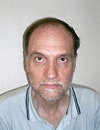 |
INTRODUCTION
The theory of transmission lines. Definition and properties of scattering parameters. Impedance matching techniques. Rectangular and coaxial waveguides, microstrip and coplanar lines. Overview of hybrid and monolithic microwave integrated circuits.
HIGH FREQUENCY ACTIVE TWO PORT NETWORKS
Stability of two-port networks and microwave oscillators.
Basic principles of linear microwave amplifiers.
Non linear effects in high frequency amplifiers.
HIGH FREQUENCY PASSIVE COMPONENTS AND CIRCUITS
Modeling of coupled transmission lines and design of directional couplers.
Branch-line, rat-race and Wilkinson dividers.
SPST switches, SPDT switches, and basic principles of microwave phase shifters.
Low-pass and band-pass microwave planar filters. |
Reference book:
Syllabus
VLSI Circuit and System Design - 9 ECTS
Marco Re (Eng)

|
1. Introduction
2. Circuits and layout
3. Theory of CMOS Transistor
4. Static analysis and Transient response
5. Power consumption
6. SPICE simulation
7. Design of Digital Circuits
8. Logic families
9. Design of Sequential Circuits
10. Design for testability
11. Scaling & Economic Aspects
12. Issues in Circuits
13. Adders
14. Functional Unit Datapath
15. SRAM
16. CAM, ROM, PLA
17. Packaging, Power and Clock
18. PLL and DLL
19. I/O circuits
20. A Study Case |
Reference book:
Introduction to Computing Systems: From Bits and Gates to C and Beyond 2nd Edition
McGraw-HILL
SLIDES (2018-19 Prof. Marco Re)
BLOCK C
Electromagnetic fields - 6 ECTS
Paolo Ferrazzoli 2011-2018
Cecilia Occhiuzzi 2018-2019
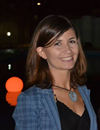
|
1.Transmission lines.
The Lumped-Circuit theory.
Sinusoidal waves on the ideal lossless line.
Characteristic impedance. Power transmitted by a single wave.
Reflection and transmission.
Transmission lines with losses.
2.Transmission lines techniques.
Standing wave ratio.
Impedance.
The Smith chart.
Impedance matching techniques.
Practical transmission lines.
3.Fields and field operators.
Review of vector analysis.
Scalar and vector fields.
Line and surface integrals.
Differential operators: Gradient, Divergence, Curl, Laplacian.
4.The electrostatic field.
Source of the electrostatic field.
The source equation.
Gauss’ law. The electric displacement D vector. Ohm’s law.
Electrostatic energy and potential.
5.The magnetostatic field.
Origin of the magnetostatic field.
Magnetic flux density and magnetic flux.
Magnetic force.
The magnetostatic curl equation.
Stoke’s theorem and Ampere’s circuital law.
Boundary conditions.
6. Time varying fields.
Displacement current. The continuity equation.
Faraday’s law.
Boundary conditions for the tangential electric field.
Maxwell’s equations.
7. Electrodynamics.
Sinusoidal fields.
The skin effect.
Boundary conditions for good conductors.
Electromagnetic waves. The uniform plane wave.
The quasi-static approximation.
8.Plane waves.
Characteristics of plane waves. Polarization of plane waves.
Poynting’s theorem.
Reflection and transmission at normal incidence.
Reflection and transmission at oblique incidence.
Plane waves in lossy media.
9.Guided waves.
TEM waves in transmission lines.
Hollow metal waveguides. TE waves. The TE10 mode. Waveguide losses.
10. Radiation and antennas.
Sources of radiation.
The elementary dipole. Directivity and gain.
Long-wire antennas. Radiation resistance.
Aperture antennas.
Definition of effective area. Relation between directivity and effective area.
|
Reference book: S.E. Schwarz, “Electromagnetics for Engineers”, Oxford University Press, 1990
Notes made available by the teacher.”
Networking and internet - 9 ECTS
Stefano Salsano Domenico (2015-17)
Luca Chiaraviglio (2017-2019)
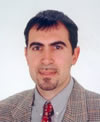 |
Objectives
The goal of the course is to provide the fundamental knowledge to understand the current networking technologies and the ongoing trends: Local Area Networks and Wide Area Networks, Ethernet, TCP/IP, Internet architecture. The course will also introduce the performance aspects, as needed for the design and engineering of telecommunication networks.
Content
Classification of network: LAN vs WAN, data networks vs. circuit networks. Network topologies, services and functions. Multiplexing and switching. Packet switching vs. Circuit switching. Layering of networks functions. The TCP/IP model and architecture. The Application Layer (HTTP, DNS, socket programming). The Transport Layer (TCP, UDP). The Network Layer, IPv4 and IPv6. IP addressing and private networks. IP routing. Local Area Networks, ARP, DHCP. The Ethernet technology.
Performance evaluation of networks. Basic queueing models for packet networks and circuit networks.
Reference book:
James F. Kurose, Keith W. Ross, “Computer Networking: A Top-Down Approach”, 6th Edition |
Reference book:
Fundamentals of Telecommunications - 9 ECTS
Michele Luglio
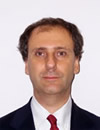 |
Deterministic continuous-time signals
Introduction, definition of signals, ideal transmission of signals, time domain signals, complex notation, Dirac impulse, energy and power. Affinity: cross correlation and autocorrelation. Time domain series representation of signals. Representation in the signal domain. Fourier transform. Affinity for frequency represented signals, energy and power spectrum, sampling theorem. Analytic signal and complex envelope. Multilevel source signals, binary signals, synchronous and asynchronous signals. Linear transformations. Fundamentals of transmission.
Multiplexing, analogue digital conversion, basics on channel coding, basics on modulation.
Time continuous random variables and stochastic processes
Random variables theory, probability distribution and density functions, conditional probability distribution. Expected value, variance and covariance. Conditional density functions, complex random variables. Stochastic processes. Classification, spectral theory, transformation of stochastic processes. The Gaussian process.
Stationary processes, ciclostationary processes, processes represented by the complex envelope, stationary process not in base band, processes represented in time series, real processes with random factors, processes sampled in base band, complex processes with random factors. Gaussian processes. Markov processes: properties, continuous and discrete time.
Imperfect transmission
Imperfect connection. Imperfect transmission over non linear channel. Imperfect transmission with independent disturbs.
Power analysis of a transmission system. Noisy linear two port systems. Receiver sensitivity.
Signals utilized in transmission systems
Harmonic signals modulation. Analogue harmonic modulation. Amplitude modulations (AM). Angle modulations: phase (PM) and frequency (FM). Performance analysis of harmonic modulation systems.
Signals lab
Introduction to Matlab and its use to graphically represent signals. Operations among signals. Study of signal properties (energy and power) and correlations. |
Reference book:
Digital Signal Processing - 6 ECTS
Marina Ruggieri
 |
Discrete-time signals and systems; The sampling process; Discrete-time Fourier transform (DTFT); Z-transform; Discrete Fourier Series (DFS); Discrete Fourier Transform (DFT); Introduction to Processing; Finite and Long Processing; DFT-based Processing; Fast Fourier Transform (FFT); Introduction to Digital Filters: FIR and IIR classification; Structures, design and implementation of IIR filters; Structures, design and implementation of FIR filters; Analysis of finite word length effects; DSP system design and applications; Discrete-time random signals; Spectral Density estimation. VLAB: Design examples and applications of IIR filters; Design examples and applications of FIR filters; Matlab-based lab and exercises. |
Reference book:
|
 University of Rome Tor Vergata
University of Rome Tor Vergata 